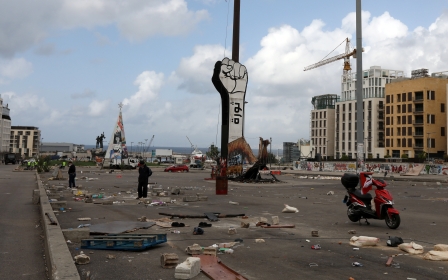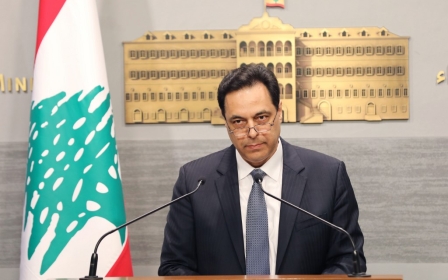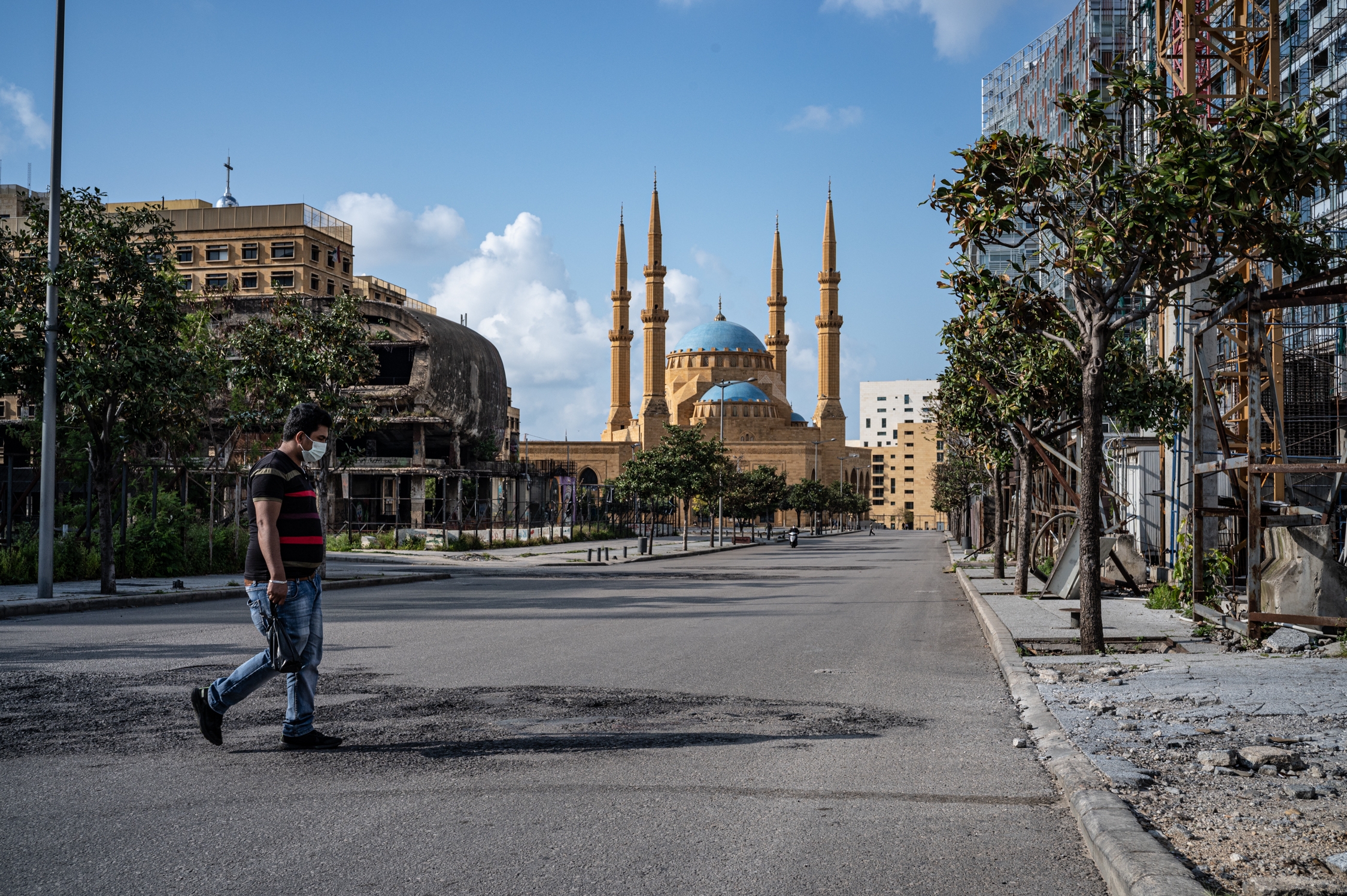
In pictures: Beirut from protests to lockdown
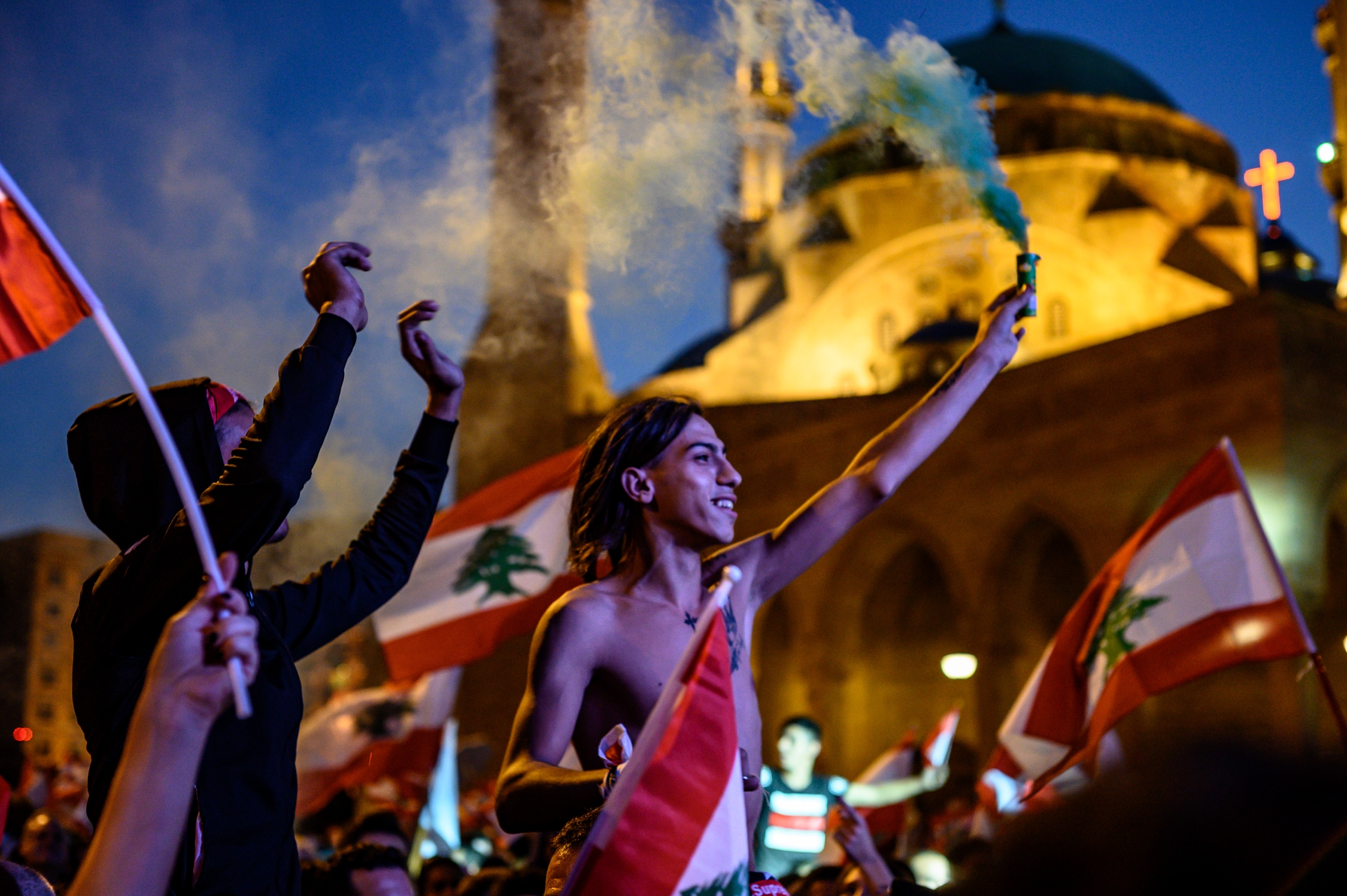
A boy holds aloft a smoke canister in front of the Mohammad al-Amin Mosque in Martyrs’ Square on the first weekend of Lebanon’s protest movement, also known as the thawra (revolution).
That first weekend saw hundreds of thousands of protestors from different social backgrounds and from all over the country descend on central Beirut to voice their discontent at decades of economic mismanagement and government inefficiency (MEE/Finbar Anderson)
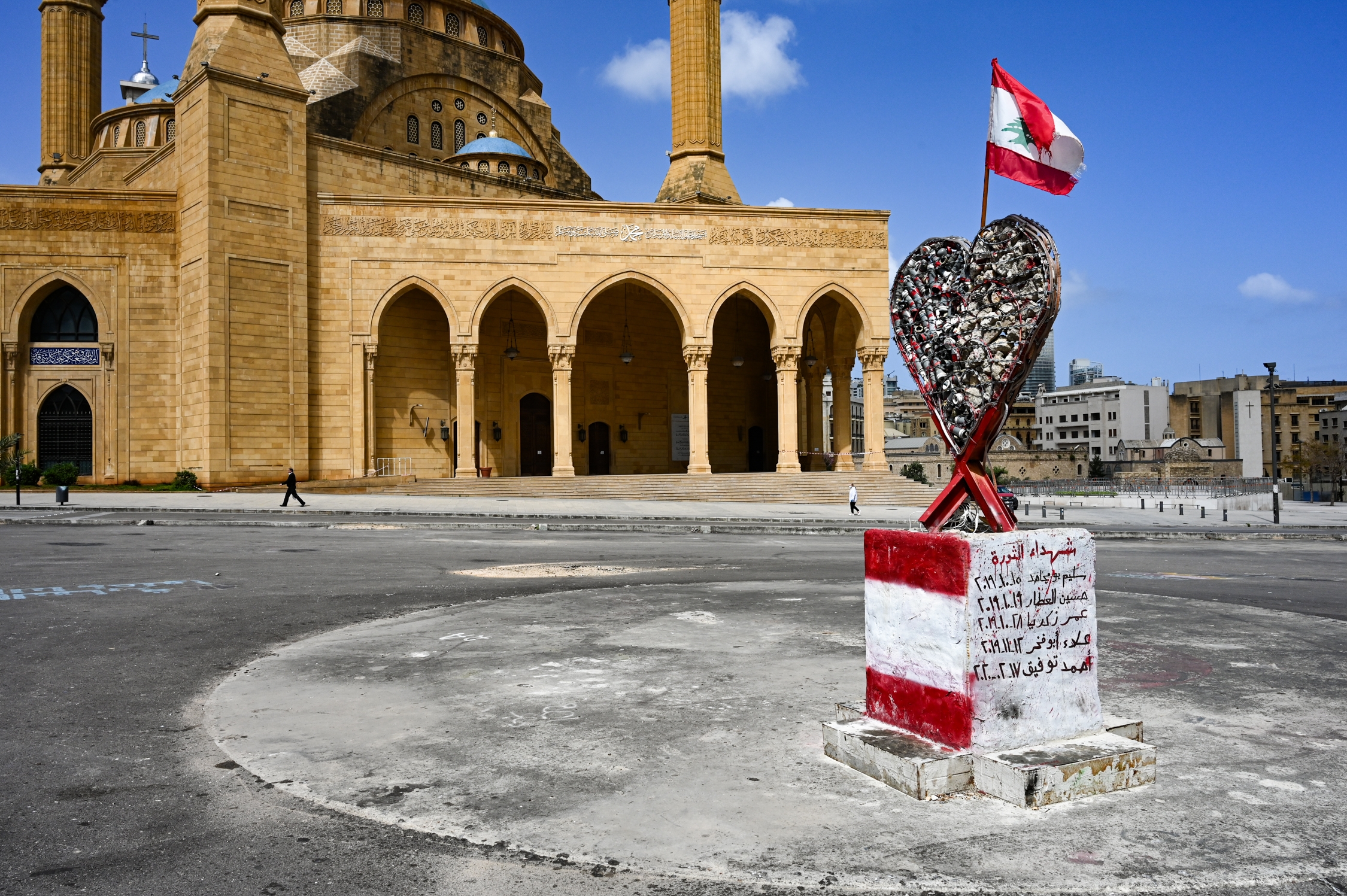
A view of a quiet Martyrs’ Square, with a monument dedicated to those killed during the protest movement in the foreground.
Lebanon's protests roiled on in one form or another until last month when the coronavirus pandemic prompted the government to order a lockdown (MEE/Finbar Anderson)
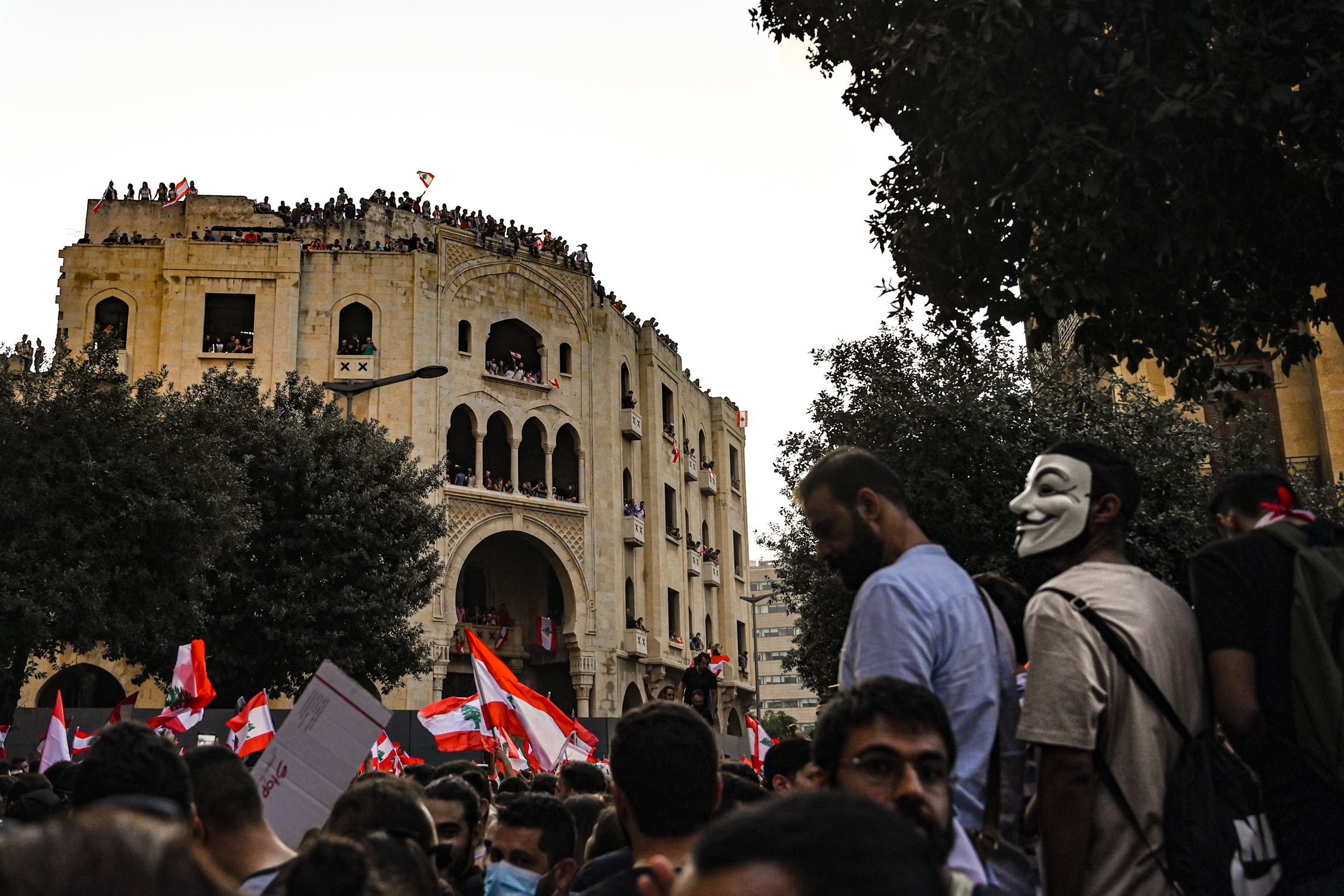
Crowds throng Beirut’s Grand Theatre and the street connecting the two main protest areas of Martyrs’ Square and Riad al-Solh Square on the third day of Lebanon’s protest movement (MEE/Finbar Anderson)

One of Lebanon's many ruins from the 1975-90 civil war, the long-shuttered Grand Theatre became symbolic of protestors' efforts to reclaim some of the empty and abandoned spaces in Downtown Beirut. Now it lies empty again (MEE/Finbar Anderson)

Anti-government protestors start fires in central Beirut on the first night of the protest movement.
The first two days of protests saw the destruction of public property and fires lit in the streets, as anger that had been building for years over a steadily deteriorating economy and poor governance finally snapped (MEE/Finbar Anderson)
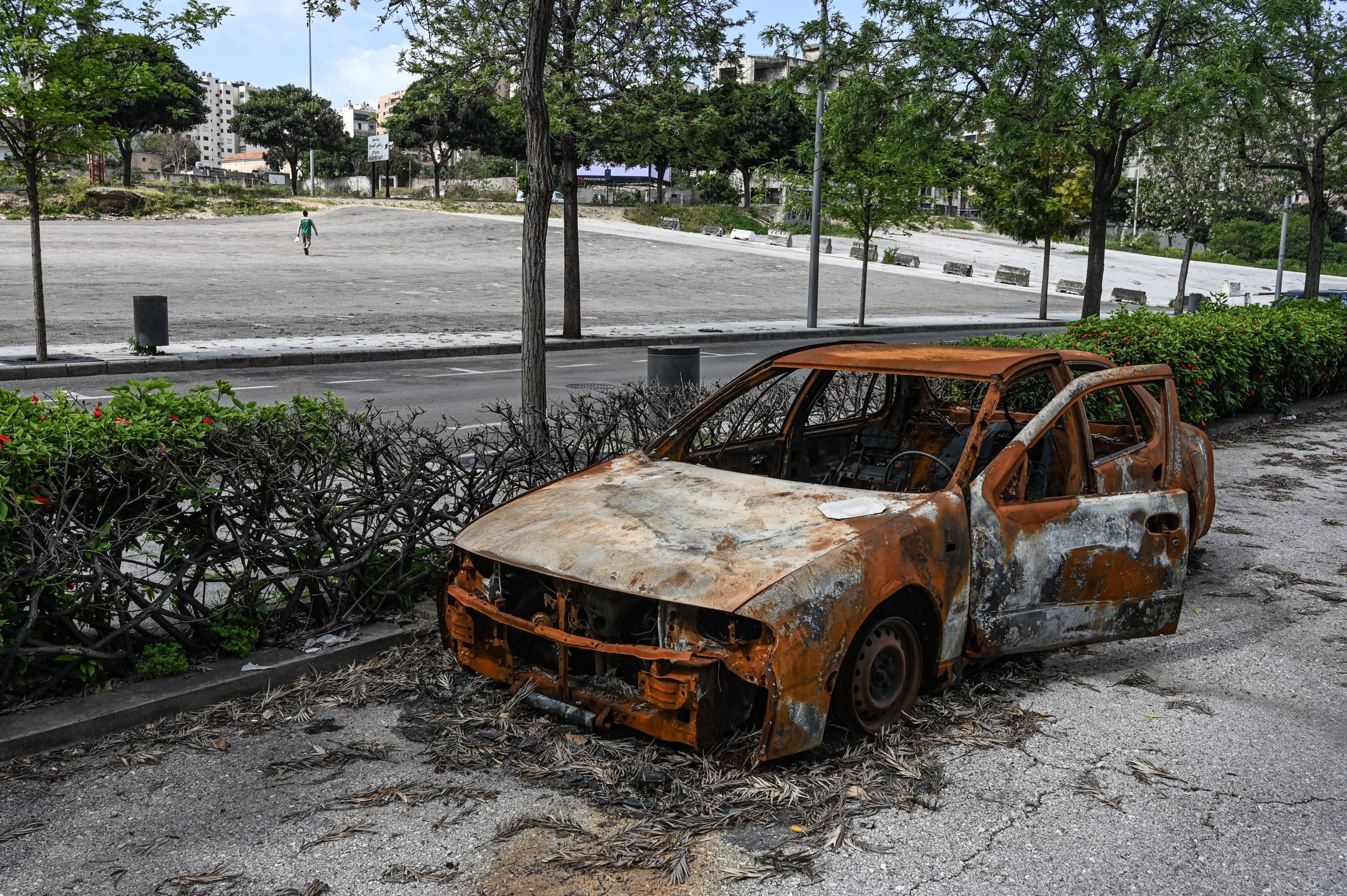
Though the protesters may have left the streets, evidence of those nights of anger hasn't. Here, the charred remains of a torched car set alight on the night of 17 December sit abandoned in a central Beirut parking lot (MEE/Finbar Anderson)

Anti-government protestors run from supporters of the Amal Movement and Hezbollah on the Ring Bridge road on 29 October.
The Ring Bridge, close to Downtown Beirut, became a focal point of the protest movement. Anti-government protestors frequently shut down the centrally located highway, sometimes resulting in clashes with the Amal Movement and Hezbollah supporters (MEE/Finbar Anderson)

Now, the Ring Bridge intersection, one of the capital's busiest thoroughfares, doesn't need protesters' roadblocks to keep it quiet (MEE/Finbar Anderson)

Revellers line the streets of east Beirut’s Gemmayzeh district a week into the protest movement.
Beirut’s bars witnessed a boom in the first weeks of the movement as protestors let off steam after demonstrating in their thousands nearby (MEE/Finbar Anderson)

Now the city has no nightlife to speak of. Here, a man wearing a facemask walks past the shuttered doors of two popular Gemmayzeh bars, closed as part of the measures to combat the coronavirus pandemic (MEE/Finbar Anderson)
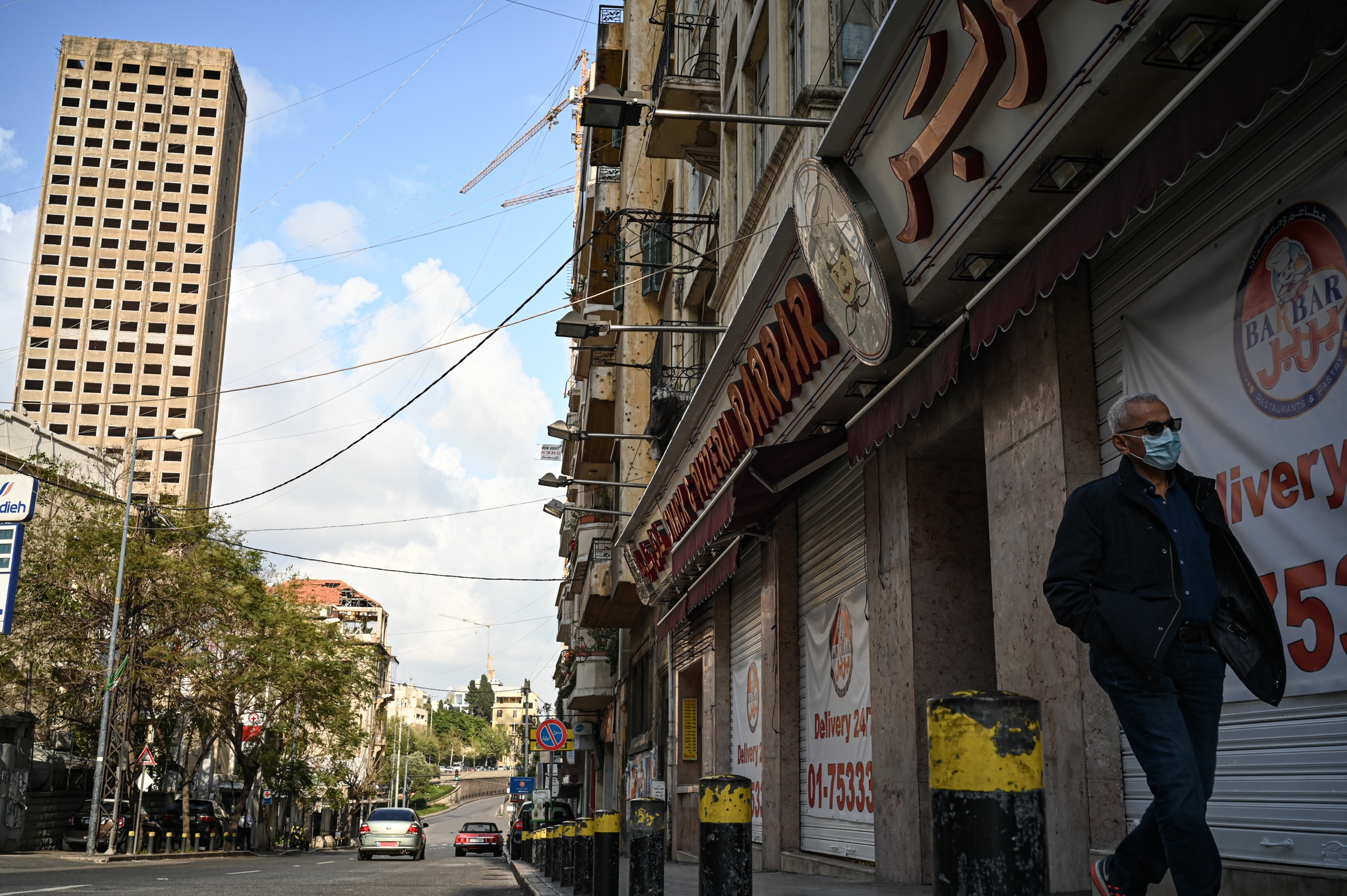
The popular Barbar takeaway restaurant in Hamra famously never shuttered its doors throughout the 15-year Lebanese Civil War and remained open during the economic crisis and the protest movement.
It was finally forced to close as a result of the coronavirus pandemic (MEE/Finbar Anderson)
Middle East Eye propose une couverture et une analyse indépendantes et incomparables du Moyen-Orient, de l’Afrique du Nord et d’autres régions du monde. Pour en savoir plus sur la reprise de ce contenu et les frais qui s’appliquent, veuillez remplir ce formulaire [en anglais]. Pour en savoir plus sur MEE, cliquez ici [en anglais].



